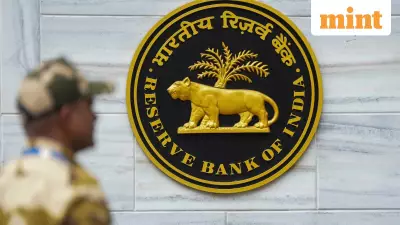
A significant strategic shift is underway on Wall Street, as major financial institutions accelerate their expansion into Indian hubs in direct response to tightening US immigration policies under President Donald Trump. The growing reliance on India's Global Capability Centers (GCCs) is set to intensify, with firms pivoting from American offices to Indian campuses to secure top talent.
H-1B Visa Curbs Trigger Immediate Expansion Plans
According to a Bloomberg report, senior executives at two major US banks in India are already in active discussions with their head offices to significantly ramp up their GCC operations. This move is a direct countermeasure to the recent H-1B visa crackdown. Some lenders are even considering revoking offer letters for positions based in the United States and creating alternative roles within their Indian centers instead.
The financial impact is becoming a major deterrent. Donald Trump’s new $100,000 fee for H-1B visa applications has taken companies by surprise. JPMorgan Chief Executive Officer Jamie Dimon admitted the move "caught everyone off guard." Ben Hodzic, head of North America at recruitment firm Selby Jennings, confirmed that companies are now questioning the priority of US-based roles, especially for jobs requiring heavy math or computer science skills.
From Back Office to Mission-Critical Hub
What began in the 1990s as simple back-office support has transformed into the operational backbone of global finance. The sprawling campuses in Bengaluru, Hyderabad, Gurugram, and Mumbai now employ vast armies of quants, risk analysts, and investment professionals. The work conducted here is increasingly sophisticated and critical.
The importance of these Indian hubs is now so profound that, as per Bloomberg, a catastrophe like an earthquake at one European bank's Indian center would disrupt its activities more severely than a similar disaster at its headquarters.
This strategic elevation is reflected in the numbers:
- The top six US banks employ approximately 150,000 staff in their Indian GCCs.
- Goldman Sachs and Morgan Stanley now have more staff in India than in any other country outside the United States.
- Goldman's India workforce has exploded from 300 in 2004 to over 8,000 employees today.
India's Deep Talent Pool Drives Competitive Edge
India is universally recognized as one of the world's largest tech talent pools. The Colliers’ Global Tech Markets: Top Talent Locations 2025 report places it alongside China and Japan as one of only three countries with cities in the global top 10 rankings.
Vivek Ramji Iyer, a partner at Grant Thornton Bharat LLP, emphasized that "India is no longer just a low-cost destination with cheap labor, but a market with deep talent." This is evidenced by Goldman Sachs promoting 38 people to managing director in Bengaluru this month, its largest cohort of MD promotions after New York and London.
The cost advantage remains substantial. An engineering graduate can earn between ₹300,000 to ₹800,000 per year for an entry-level role at a US bank’s GCC in India, compared to a $60,000 salary for an Indian professional on a US visa, and up to $120,000 for a US citizen in an identical role.
Pramod Kumar, CEO at Barclays Plc’s Indian unit, summarized the trend, stating, "Over decades, India has emerged as a key geographic center for banks’ GCC expansions," and predicting the momentum will only increase. Even before the latest visa moves, employment at these hubs was projected to jump 50% to 2.8 million people by 2030, according to estimates from Nasscom and Zinnov.





